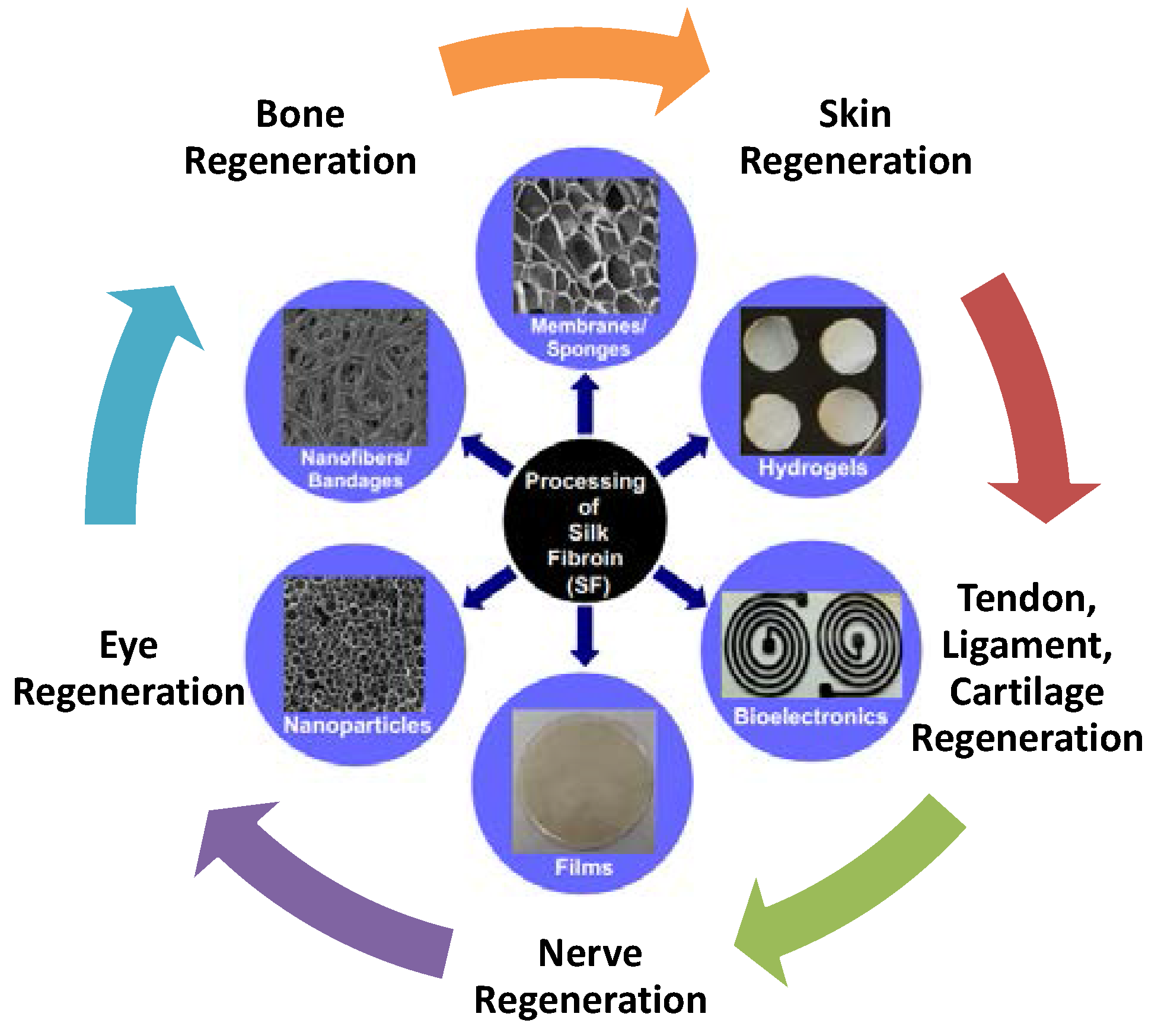
All results indicated that the composition of the scaffolds had a significant effect on their physical properties, and that can easily be tuned to obtain scaffolds suitable for biological applications. The fraction of protein released from the sericin/PVA/glycerin scaffold was about 4%, with values of about 1 and 0.04% in the case of scaffolds with 0.01 and 0.1% genipin, respectively. A small amount of sericin was released from the scaffold and a higher concentration of genipin, resulting in less protein leaching compared to non-crosslinked sericin/PVA. In terms of mechanical properties, the sericin/PVA/glycerin scaffold exhibited a similar compressive strength to the scaffold with a high genipin concentration, whereas a low concentration of genipin softened and reduced the compressive strength of the scaffold. After immersing the sericin/PVA scaffold into purified water, the scaffold completely dissolved within an hour, whereas the scaffolds containing glycerin or glycerin with 0.1% genipin swelled 8 and 11 times, respectively, compared with the initial stage after 6h of immersion. Genipin further enhanced the moisture absorption capacity of the scaffold and extended the time taken to reach equilibrium. The sericin/PVA scaffold had a low water sorption capacity, but adding glycerin significantly increased this property.
#Silk protein scaffold free
Adding genipin into the scaffold resulted in a higher degree of crosslinking or fewer free ∈-amino groups, as shown by the decrease in the stretching (C-H) peak and absorption peaks around 1370-1650cm~(-1), respectively. The results of FTIR indicated that glycerin retained a high moisture content and had a major effect at 3286cm~(-1), indicating the presence of water molecule in the matrix structure. Smaller pore sizes and better uniformity were found as the concentration of genipin in the scaffold increased. SEM showed that adding glycerin into scaffold gave better uniformity and porosity. Sofregen is applying its expertise in silk protein science to develop a range of new products from advanced versions of our proven biological scaffold to the next generation of aesthetic injectables. Our objective was to investigate the properties of a three-dimensional silk sericin and PVA scaffold with and without glycerin and genipin at various concentrations. Glycerin (as a plasticizer) and genipin (a crosslinking agent) are necessary to make a strong and stable matrix. Sericin, a by-product from the silk industry, can form a three-dimensional scaffold with PVA after freeze-drying but has a fragile structure. The techniques described here provide potential new applications for the recycling and utilization of sericin, which is a waste product of silk processing.A porous-three-dimensional scaffold shows several advantages in terms of tissue engineering since it can provide a framework for cells to attach, proliferate and form an extracellular matrix. Thus, the SP bioinks obtained could be used to print different types of SP composite scaffolds adapted to a variety of applications, including cells, drugs, tissues, etc. The L929 cells adhered, stretched, and proliferated well on the SP composite scaffold. The bovine insulin release rates reached 61% and 56% after 5 days. The swelling properties and resistance to protease hydrolysis of the SP scaffolds containing sericin were improved. The thermal decomposition temperatures of the SF/WS (10%) and SF/ILS (20%) scaffolds, mainly composed of a β-sheet structures, were 3 ☌ and 2 ☌ higher than that of the SF scaffold alone, respectively. Several successful works, both in vitro and in vivo, have been reported using silk-based scaffolds to regenerate bone tissues or other parts of the skeletal.

The compressive strength of the SF/ILS (20%) scaffold added to G-ILS was 45% higher than that of the SF scaffold alone. After adding I2959 (a photoinitiator), the SP bioinks were prepared with phosphate buffer (PBS) and subsequently bioprinted into various SP scaffolds with a 3D network structure. The pNSR-16 recombinant spider silk protein scaffolds has satisfactory cytocompatibility and the scaffolds are ideal scaffold material for tissue engineering. NIH-3T3 cells could adhere and grow on the scaffolds and secret FGF-2. When the three silk proteins (SPs) were individually grafted with glycidyl methacrylate (GMA), three grafted silk proteins (G-SF, G-WS, G-ILS) were obtained. Compared with the control, the extract fluid of materials culturing the NIH-3T3 cells was not apparently different.

The inner layers of sericin (ILS) were also prepared from the degummed silk in boiling water by 120 ☌ water treatment. The whole sericin (WS) can not only be recycled, but completely degummed silk fibroin (SF) is also obtained in this process. This paper describes the use of silk protein, including fibroin and sericin, from an alkaline solution of Ca(OH) 2 for the clean degumming of silk, which is neutralized by sulfuric acid to create calcium salt precipitation.


 0 kommentar(er)
0 kommentar(er)
